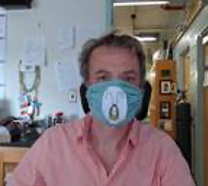Event
Chlamyomonas as a model for cilia-related disease
Department of Biology Seminar Series
Karl Lechtreck, University of Georgia

The Lechtreck lab (https://research.franklin.uga.edu/Lechtreck-Lab/) explores how cells construct, maintain and utilize cilia, including studies on microtubule-based intraflagellar transport, length control and mechano-sensation. Much of their work exploits the unicellular alga Chlamydomonas reinhardtii, as a genetically accessible model system for investigating all manner of ciliary biology.
- Liu P et al 2020. Chlamydomonas PKD2 organizes mastigonemes, hair-like glycoprotein polymers on cilia. J Cell Biol 219:e202001122 doi:10.1083/jcb.202001122.
- Craft van de Weghe J et al 2020. Diffusion rather than intraflagellar transport likely provides most of the tubulin required for axonemal assembly in Chlamydomonas. J Cell Sci 133:jcs249805 doi:10.1242/jcs.249805.
- Dai J et al 2018. In vivo analysis of outer arm dynein transport reveals cargo-specific intraflagellar transport properties. Molec Biol Cell 29:2553-65 doi: 10.1091/mbc.E18-05-0291.
- Craft JM et al 2015. Tubulin transport by IFT is upregulated during ciliary growth by a cilium-autonomous mechanism. J Cell Biol 208:223-37 doi:10.1083/jcb.201409036.
